
China users’ time spent on digital media has exceeded that on traditional media in 2015. Digital media is the largest media by ad revenue; online ad revenue will continue to grow, especially mobile ad revenues.
According to eMarketer, China internet users on average spend over 6 hours 8 minutes on media per day, of which over 3 hours on social media, 2 hours 40 minutes on TV, 11 minutes on radio, 10 minutes on newspaper, and only 1 minute on magazine. 94.8% users over 18 years old watch television while spending less time is spent. 46% users use the internet (PC), 43.1% use smartphones, and 42% use feature phones.
The compound average growth rate (CAGA) of print media (newspaper and magazine) from 2011 to 2015 is -7.4%. The CAGA of newspaper is -5.1% and the CAGA of magazine is -7.4%. A report from Kantar shows the number of social media users in urban aras grow quickly from 28.6% in 2013 to 34% in 2014, which indicates that social media gradually become mainstream.
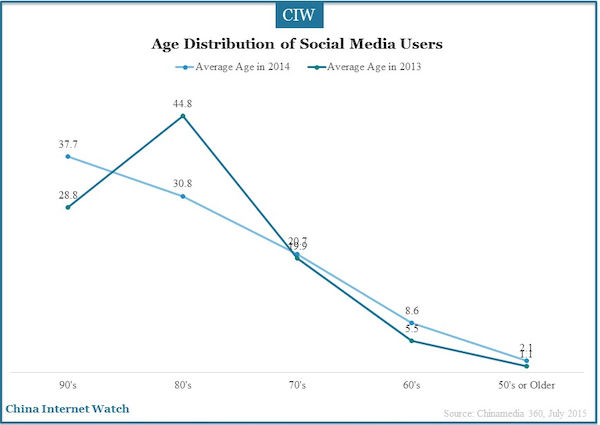
Diversification is one of the most obvious features of China social media, the post-90s are the largest group whose average age in 2014 is 30.4 years old; the average age in 2013 is 28.8 years old, which indicates that more different age-groups begin to use social media.
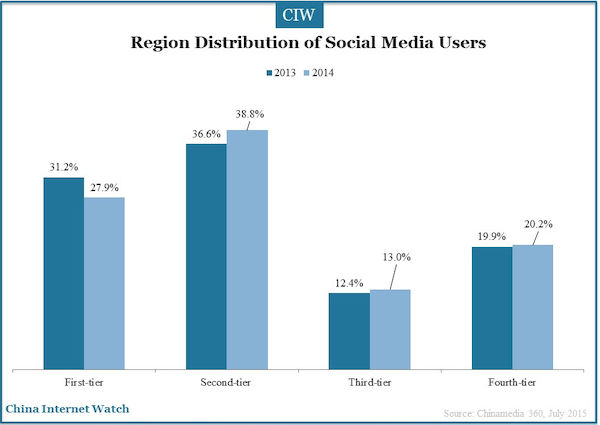
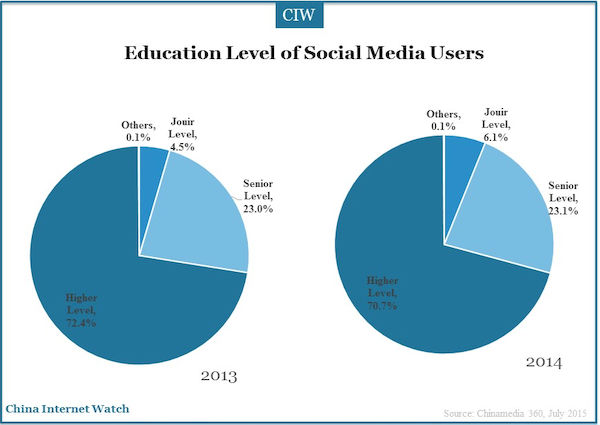
The number of users in the second, third and fourth-tier cities has increased while the number of users in first-tier cities has declined. The ratio of high education users dropped.
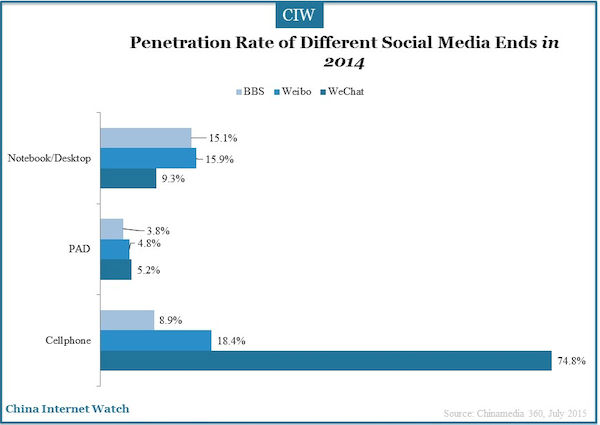
Chinese users prefer to use mobile internet for social media. Most people like using WeChat and Weibo on mobile apps while browsing BBS on computers. And different age level users have different internet behaviors. The post-90s often watch videos, the post-90s often shop online, and the post-70s often read news on the website.
In 2013, China internet users use Qzone most frequently while in 2014 WeChat became one of the most frequent-used mobile apps in China. More original content were generated on WeChat Weibo for the first time in 2014, and the engagement on WeChat was higher.
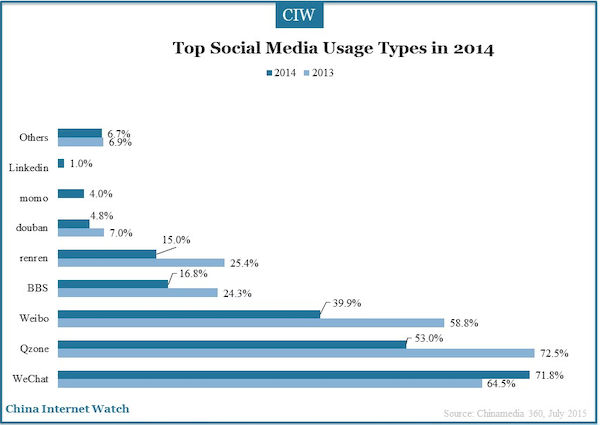
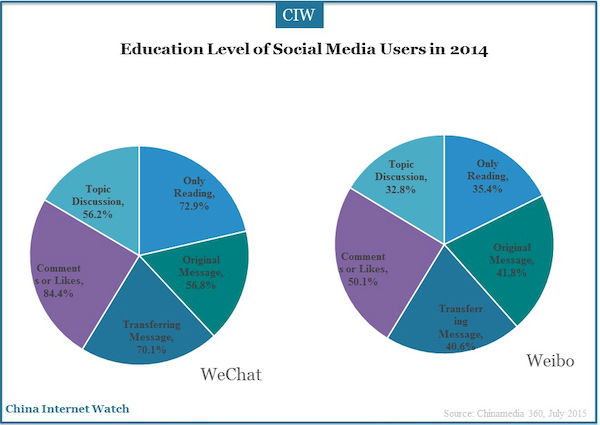
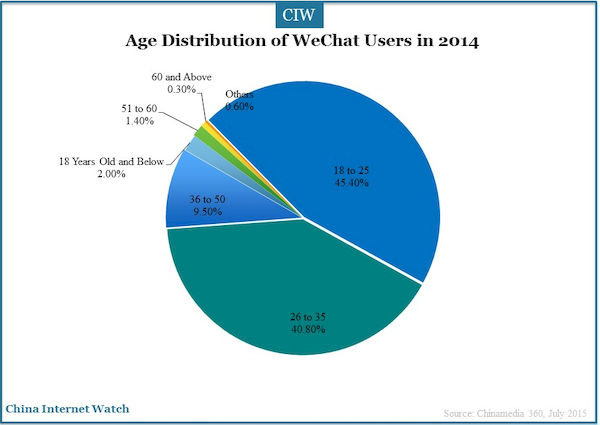
Chinese users who only read information on social media tend to be more according to data of Chinamedia 360. In 2014, 46% social media users didn’t participate in topic discussion or leave comments compared with 39% in 2013. A majority of users expected to get instant and practical information from social media; and users were more concious of privacies. Thus interactivities turn to be less.
Let’s take Wechat and Weibo as examples.
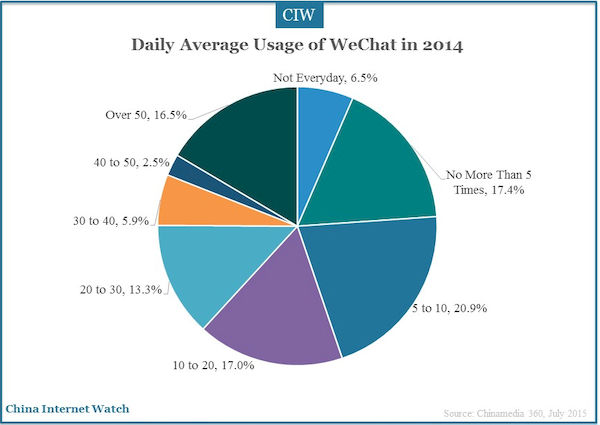
The average age of WeChat users is 26 years old, 97.7% users are under 50 years old. Most of WeChat users are employees, freelances, students and staff in state-owned enterprises.
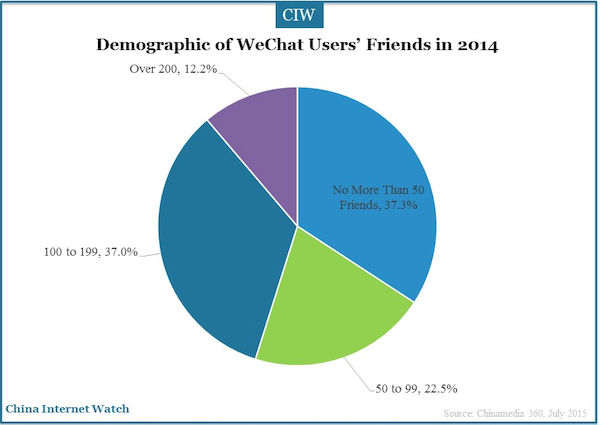
WeChat has become an important part of Chinese life. 25% users on average open WeChat over 30 times per day, and 52.2% users over 10 times. About half of WeChat users have over 100 WeChat friends, 62.7% users have over 50 WeChat friends.
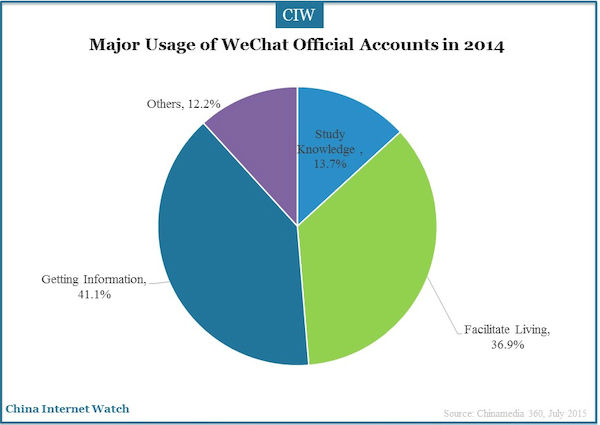
WeChat official account is one of the major features of WeChat. About 80% users would follow official accounts, especially accounts of companies and media. 29.1% official account users follow WeMedia accounts, 25.4% follow verified media accounts, 18.9% follow companies, 5.9% follow marketing accounts, and other 20.7% don’t follow any account. Over 40% users want to get information from official accounts.
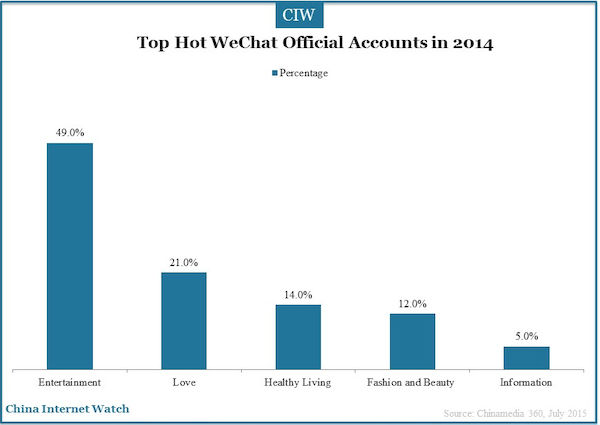
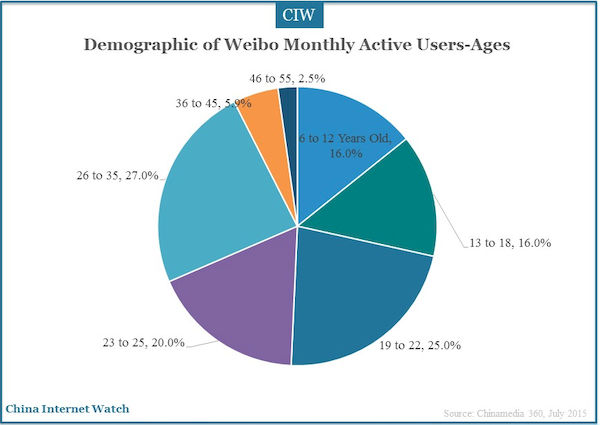
Official subscription accounts can be categorized in entertainment, health, news, beauty and fashion by content. 42% accounts would interact with fans. Entertainment accounts are most welcome.
Combined MAU of Weixin (Chinese version of Wechat) and WeChat were 600 million as of 30 Jun 2015. Weibo MAUs reached 212 million in Q2 2015. 72% are 19 to 35 years old, the post-80s and post-90s are major parts of Weibo users. Male users made up of 60.9%, and female of 39.1%. Users in South China and East China are more active on Weibo than users in other parts of China.
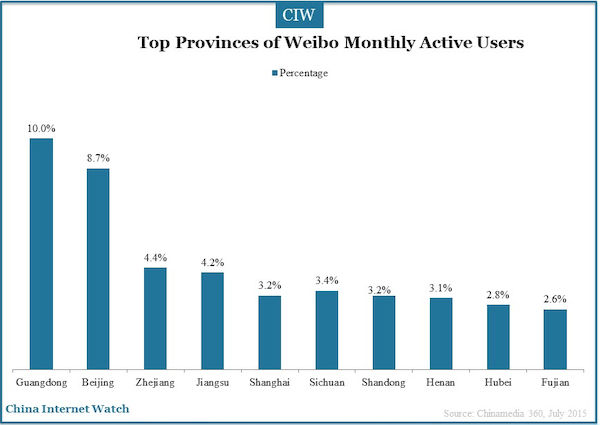
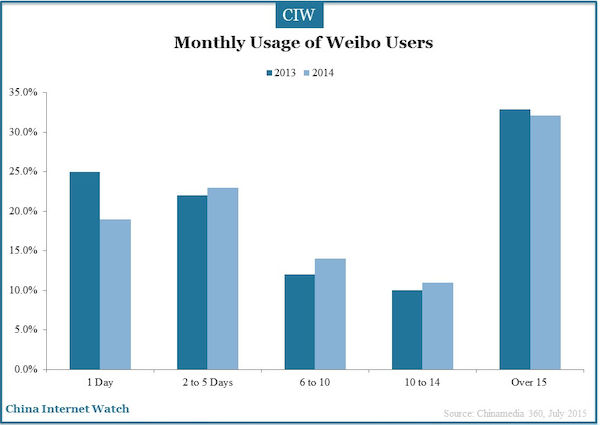
Also read: WeChat Offers 8 Solutions For Smart Devices